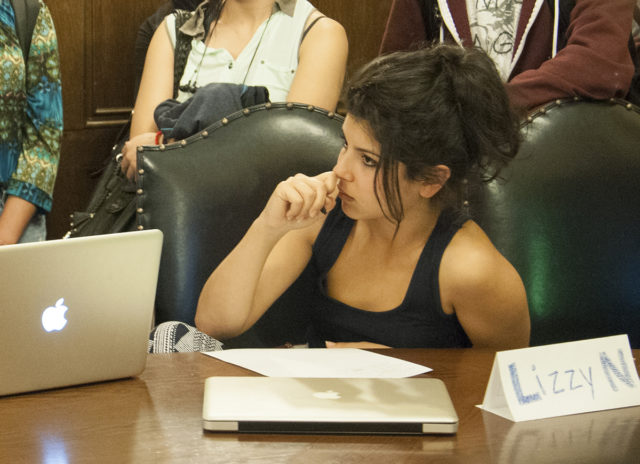Sometimes the oldest, most overused of cliches ring the truest.
A resolution set to be presented at the student government meeting tonight has an old grammar school adage looping in my head: It’s not what you say, it’s how you say it.
The eighth to be presented to the council so far this school year, the resolution calls for UCLA to divest from companies that profit from the prison-industrial complex, which is an economic culture that promotes mass incarceration.
While the intent of the resolution is a good one – the large number of young people of color being incarcerated deserves the attention of the council – its focus and language cloud the point. The document’s inflammatory rhetoric ultimately illustrates a more general problem with USAC resolutions and their often divisive political nature.
According to the language of the resolution, the prison system amounts to a “form of modern day Jim Crow,” referring to a set of laws that institutionalized racial segregation in the 19th and early 20th centuries.
The resolution also states explicitly in one of its “whereas” clauses: “prison is thus a modern form of slavery.”
The lines being drawn are clear enough: The prison-industrial complex benefits from incarcerating people, and the people being incarcerated the most are people of color. It’s a system set up against an already disadvantaged demographic and has disastrous consequences for higher education outcomes for young people of color.
But the language and ideology being used to draw those lines is extreme and polarizing, likely dividing the council table and the student body over word choice rather than the substance of the resolution itself. Some people on council and in the student body may, for example, feel it’s disingenuous to say that the university is complicit in a “modern day Jim Crow,” whether they think that divestment is a wise choice or not.
This resolution isn’t alone in its inclusion of polarizing rhetoric. In considering the resolution on recently appointed University of California President Janet Napolitano earlier this year, the council spent hours discussing specific clauses that made some members uncomfortable, including a clause that preemptively voted no confidence in her.
A resolution on the Israeli-Palestinian conflict, an inherently political and incredibly divisive topic, generated so much contention among councilmembers and the student body that the council meeting lasted until around 3 a.m., ultimately ending with the resolution being voted down.
This council’s insistence on bringing forward resolution after resolution in such swift succession is already problematic because it diminishes USAC’s ability to generate student awareness for statements that purport to be the official opinion of the student body. USAC’s haste in pushing forward resolutions is even more problematic because of the polarizing and political nature of nearly every one brought forward so far – if the resolutions are inherently political, after all, it’s even more important that students know about them.
Councilmembers must always consider whether or not a resolution is the best way to address an issue they find worthwhile – and if that answer is yes, its authors must work to make sure the resolution’s purpose isn’t marred by pointlessly divisive or extreme language.

